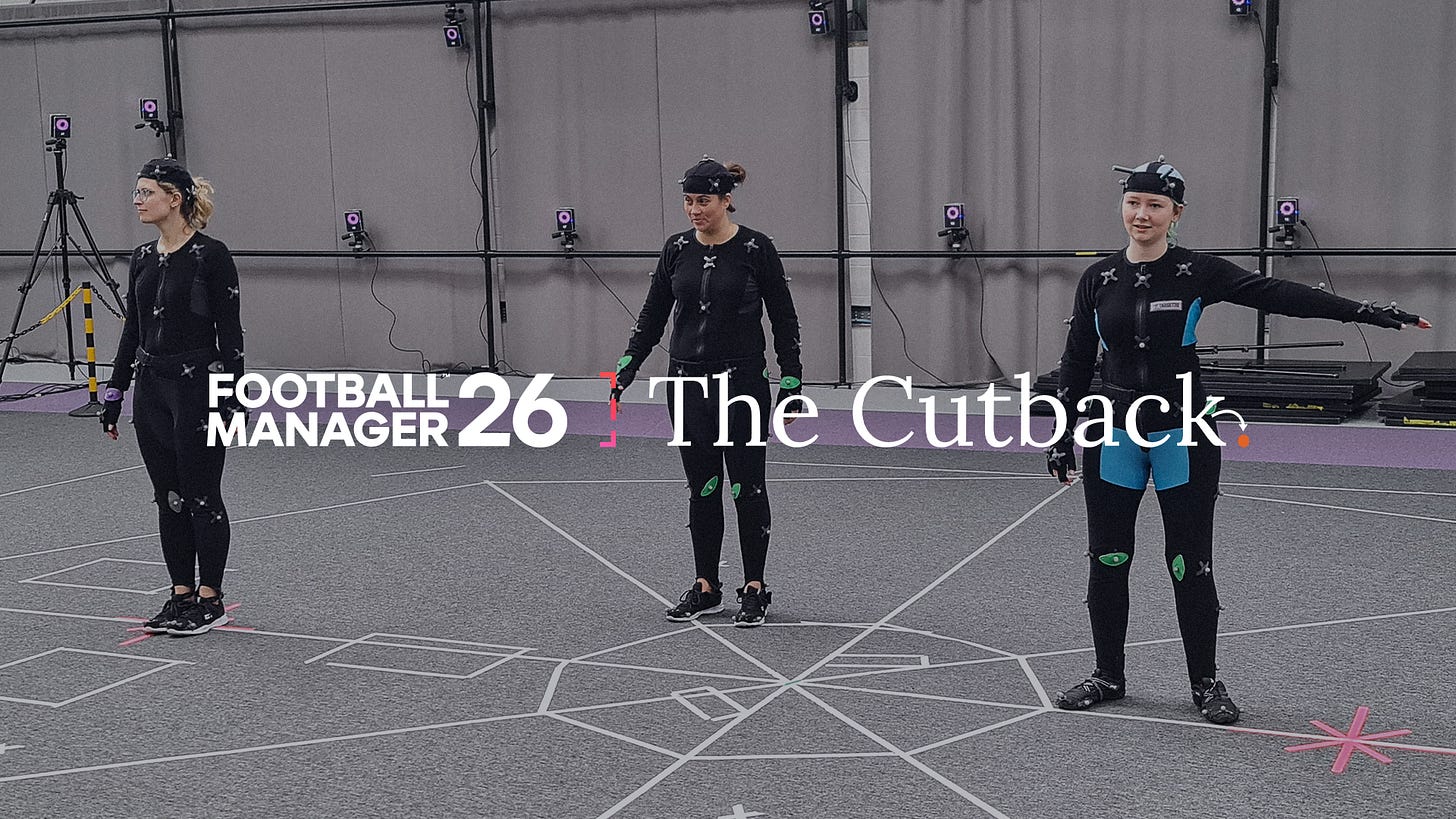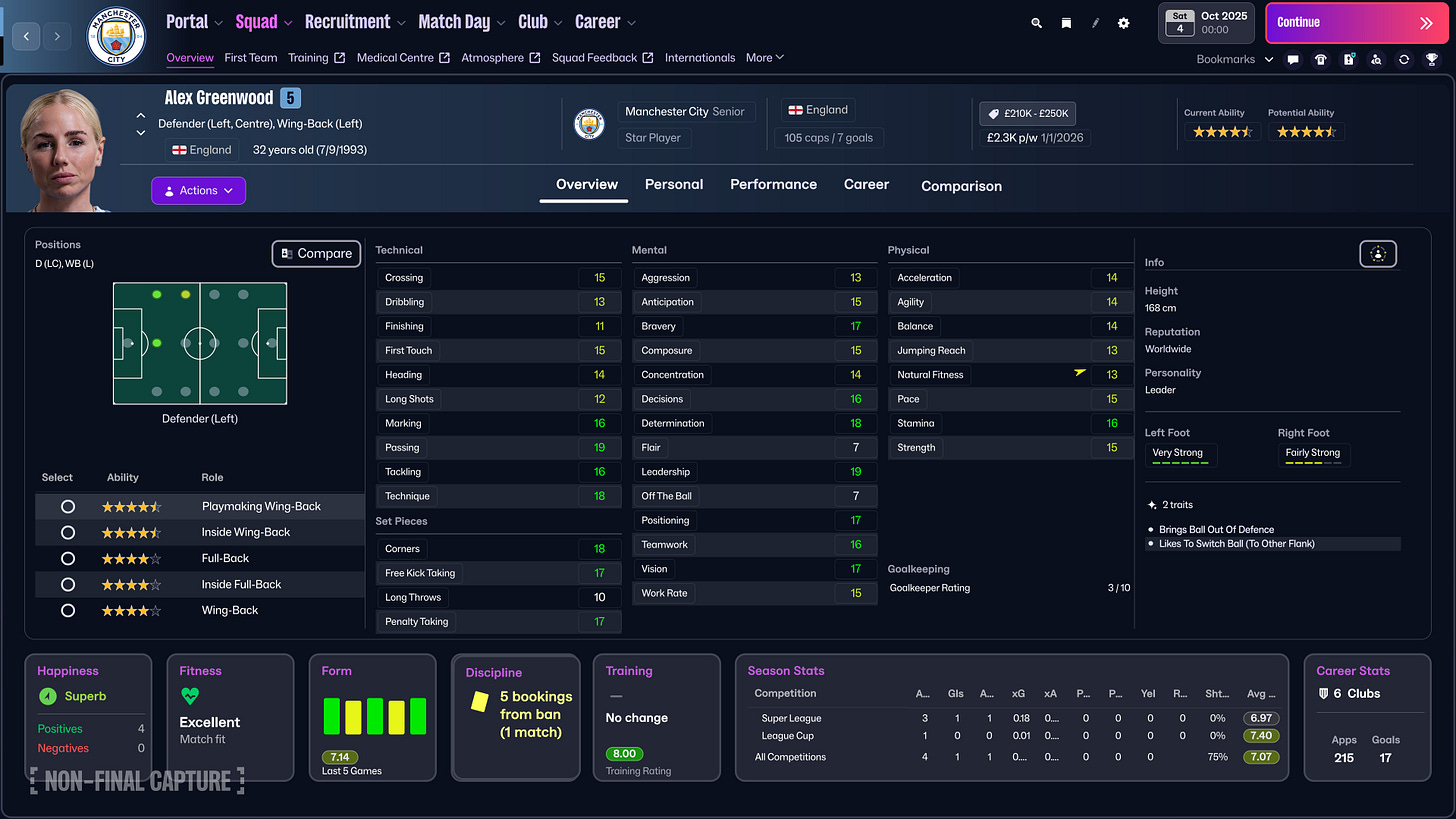Football Manager 26: The arrival of women's football and how it was built into the game
Introducing a new content series from The Cutback and Football Manager
The Cutback has partnered with Football Manager for a special series exploring the tactics, gameplay and innovations behind the world's leading football management simulation - ahead of the release of FM26.
For the first time in the series’ history, women’s football is part of Football Manager. To get fans ready for this landmark moment, The Cutback has compiled the ultimate guide to FM26.
If you’re a fan of Football Manager, you’ve probably been counting down the days until the long-awaited release of FM26. Find out how the Football Manager team built women’s football into the game with this exclusive behind-the-scenes piece.
It’s been quite the journey for the team behind the game to get to this point. In 2021, Sports Interactive revealed that women’s football would be arriving in Football Manager for the first time, and four years later it’s here. What began with just a single entry – Emma Hayes - has now grown into a database of more than 36,000 players and 5,000 staff.
But what does it take to bring women’s football to the world’s most famous football management simulation game? The Cutback sat down with four members of the Sports Interactive team to find out more about introducing one of the most exciting developments to the video game world.
A whole new world
To create the women’s football ecosystem in FM, Tina Keech, Head of Women’s Football Research, and her team immersed themselves in the game and the leagues and clubs that would become part of it.
“I spent the first eight months getting to know how the system worked,” says Keech. “I started creating players, teams, leagues, understanding the intricacies of the attributes, and what was actually needed to go into the game. I looked at the attributes, and went, ‘okay, how would this work in women's football?’”
Keech knew that the team needed to explore how the existing attribute ranking in FM could be applied to the women’s game. They needed to make sure that the new database would reflect the relative differences in strengths, speed, and physicality in the women’s football universe.
“Was I just going to go and compare Chelsea men and Chelsea women? No, because we're in a competitive real world. They're never going to play each other.”
After plenty of internal discussion, Keech says the decision was made to rank men’s and women’s players only against themselves.
“It just didn't seem fair that we'd be comparing Aitana Bonmati to Lionel Messi,” Keech expands.
“So the attributes and the team ratings were done solely in the women's world, even though the actual game is one world of football.”
Once Keech and her team knew that they wanted players to be ranked independently, it was up to the researchers to find information, data and watch clips of players across the world.
Anyone who has spent a little bit of time following women’s football will know that this is a huge challenge. The game hasn’t developed globally like men’s football, there aren’t clips readily available of players in leagues outside of the top competitions in Europe and USA, and it’s a challenge to find accurate data on players.
David Siddall, Senior Research Manager at SI, found out just how difficult that can be. “Part of my role is to make sure we match up real-life data to what we have in the game, making sure it’s balanced and accurate”, he says. “One of the biggest challenges we found is there’s not a lot of it out there, and what there is can be a bit sketchy. There’s just not the same coverage as there is in the men’s game. That was one of the biggest challenges we found.”
Where there was limited footage to verify their observations the FM team had to build a network of contacts so they could talk directly to those working in the women’s game.
Keech had an army of researchers all around the world and these experts fed into every aspect of the database, including coaching staff and academy players, as well as date of birth, nationality, and any key football data.
Part of the research team’s job is to ensure balance in all areas of the game. That goes for ranking competitions and leagues too. That ranking is crucial to FM’s distinct reputation feature.
The reputation ranking informs the balance of the game. Leagues and competitions need to be ranked so that a manager can move through the game and climb that all-important career ladder. The FM team rates every single competition on a scale of 1 to 200, taking into account historical data as well as the financial power of clubs, ownership, and even match attendance.
Sebastian Szlenkier, Quality Assurance Lead for Competitions and Rule Groups at SI, explains that it was also key that anyone playing FM26 could move between men’s and women’s football, while also having the option to play within just one database if they wish: “One of the things that we wanted to ensure was that we developed a system that works within one game, whereby managers are able to freely move, whether it's the user or an AI manager.
“We needed to figure out how that would work from a system side of things. And so what we settled upon is that you will be able to move freely, but in order to get some of the most senior jobs, you will need to have spent a bit of time in that side of the game in order to be hired.”
Challenging perceptions
One of the most unique aspects of FM26 is how it reflects the diversity of the women’s game. From hairstyles, hair textures, gender identity, and ensuring that hijabs appear in the game, to adjusting injury frequencies to more realistically reflect women’s bodies, developers and researchers had to consider it all.
With FM26 moving to the new Unity engine, the match experience is more detailed and immersive than ever. To capture authentic movement, the team enlisted former players Mollie and Rosie Kmita, along with goalkeeper Sophie Whitehouse, for early motion capture sessions.
It wasn’t just the physical movements; even FM staff were drafted in to be part of the trophy celebration scenes.
The representation in-game was very important to Chloe Woolaway, FM Women’s Football Research Co-ordinator. “I'm a player myself”, she says, “so going into it, I had to think about how I wanted to be represented and reflected.”
“There are so many elements to the women's game that you won't find in the men's game, which I think makes it really unique. From the get-go, it was something Tina and I very much wanted to flag early. We shouldn't be sort of copycatting the men's side in any way.”
A new obsession
FM24 broke records when it became the most played edition of the game, pulling in 19 million users since its release in November 2023. The passion of the FM fanbase is what makes the game so special.
There will be new fans coming to FM for the very first time because of women’s football’s arrival, while others will be diehard players. The passion for the game also adds pressure to those who make it.
“Fans want their teams represented in the most accurate way possible,” Siddall says. “Whether it’s the top division or the seventh tier - and not just in England, but in Austria, Australia and beyond.”
What’s left for Keech is just excitement as years of work culminate in fans finally getting their hands on the game.
“I'm really excited for people to see it and I really want people to feedback with their opinions.”
Szlenkier adds: “It’s been a step up in terms of the task that we’ve had over the last two years. This is one of the biggest things that we've ever done, and I'm just really excited to be part of it”.
This is a paid partnership between The Cutback and Football Manager.







So excited for this!
I'm intrigued to see how this works as a IRL scouting tool, its going to be fascinating to watch the journey this takes.
I'm literally slavering to get my paws on this....I would like the Liga MX Femenil in this ASAP!